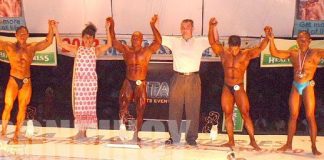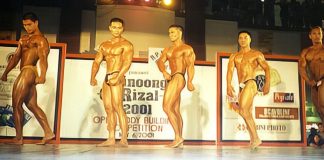Last Updated on January 26, 2024
Embarking on the journey to fitness is more than just lifting weights or hitting the treadmill. It’s a personalized experiment where individuals, acting as scientists, tweak training and dietary variables to achieve optimal results. Ever wondered why different strategies lead to success? The answer lies in genetics. This article explores specific strategies tailored to body types—Endomorph, Ectomorph, and Mesomorph—unveiling exercise and dietary tips for maximum progress.
Ever seen that woman who runs a couple of days per week and looks to be in perfect shape? Or that guy who lifts when he gets a chance, yet is muscular and shredded beyond belief?
What’s responsible for such a wide variety of training and nutrition strategies that still lead to success? Genetics. Of course, you probably already knew this. What you may not know are some of the specific strategies you can use to accelerate your progress based on your body type (and therefore your genetic makeup). Below we outline the three basic body types (Endomorph, Mesomorph, and Ectomorph) and recommend basic exercise and dietary tips to maximize your efforts.

Endomorphs
Endomorphs are generally those with a large bone structure. They can probably hoist some relatively heavy weights around the gym, but with a slower metabolism, fat loss is very difficult, which can hide their hard-earned muscle gains (or fat loss).
As opposed to the ectomorph, the endomorphs must concentrate on maximizing fat loss by adding aerobic-type exercises. How much cardio? The American College of Sports Medicine recommends: “at least 30 minutes daily, preferably every day of the week in a target heart-zone rate of 60% to 75% of max.” (Heart rate monitors are great for gauging your aerobic training).
Resistance training should follow the cardiovascular portion with an emphasis on muscular endurance (performing reps of 15 or more with short rest periods between sets). Unlike the ectomorph, the endomorph has more work to do in order to see progress. To help you out, we have included some general training guidelines below.
| Exercises | Sets and Reps |
| Include both compound and isolation movements in your resistance training. To avoid plateaus, mix up your exercises frequently, and the order in which you do them. | Avoid training too heavy too often. Do a few more sets than usual, 12 for larger muscle groups and 8-10 for smaller ones. Keep reps high even on heavy days (12-25) |
Ectomorph
Ectomorphs have very high metabolic rates. This makes it difficult for them to gain both muscle and strength.
The ectomorph faces a much greater challenge than does the mesomorph in gaining muscle and therefore must be patient with muscle gains when resistance training. Those with this body type should stick to the basic hypertrophy phase of training (in the 8-12 rep max range).
Fewer reps mean going heavy – a high-intensity workout. In turn, a longer rest period in between sets is necessary so you’re thoroughly recuperated between sets.
The ectomorph should limit high-intensity cardiovascular work (only about 20 min 3 times per week rather than every day). Finally, ectomorphs should stick to the basic mass-building movements that hit major muscle groups and deep muscle fibers.
For example, squats, presses, and deadlifts work for many major muscle groups at once and provide excellent muscle-building stimulus (avoid isolation-type exercises). Be patient and watch out for overtraining. If you don’t see the gains – adjust your workout intensity and diet rather than the frequency of your workout.
| Exercises | Sets and Reps |
| basic compound movements (bench press, squat) avoid isolation exercises that works smaller amounts of muscle. | do up to around 10 sets for larger body parts, 6-8 for smaller. don’t take warm-up sets to failure. focus on 6-10 range for reps, this is optimum for putting on size. |
Mesomorphs
This is the guy or gal who comes into the gym and doesn’t really look as if he knows what he is doing, nor does he stay very long, yet grows like a weed. Some of these people make enormous progress despite their complete lack of training or nutritional knowledge – imagine what they could do if they did. Mesomorphs can basically get away with doing less and achieving more.
However, mesomorphs are also more prone to overtraining because they see results so quickly. They also tend to do the same routine over and over, again because they see results. This could in fact lead to decreased gains. For this reason, it is recommended that mesomorphs change up their routine often. Pyramid training is an ideal method for this body type.
Mesomorphs should include both compound and isolation movements in their routine. Meso’s should hit the gym with a vengeance. They have a head start and should make the most of their genetic advantage. Cardiovascular exercise is of course recommended but at a maximum of 30 minutes about four times per week.
| Exercises | Sets and Reps |
| traditional bodybuilding: basic compound exercises followed by single-joint isolation exercises. | focus on the 10-rep range. cycle periods of heavy lifting with those using lighter weights (more reps). 3-4 sets/exercise with 2-4 exercises/body part. |
Summary
In summary, even if you have been training for years, finding the right combination of sets, reps, frequency, and intensity can be a complicated process. Make sure you are making the most of your workouts by considering your genetic makeup.
If you are a beginner, concentrate first on building a foundation and then utilize some of the parameters mentioned above. Finally, don’t mindlessly hit the weights. Stick to a plan and keep a concise record so you can note what works for you. If you are not seeing results despite your honest efforts, throw out your current routine and try something new.
Whatever you do…. don’t give up.
Frequently Asked Questions:
- How do I determine my body type?
- Body types are generally categorized as Endomorph, Ectomorph, and Mesomorph. Assess your natural tendencies, metabolism, and response to exercise to identify yours.
- Can I change my body type through training?
- While you can’t completely change your body type, you can modify your physique through targeted training and nutrition.
- What role does genetics play in fitness?
- Genetics influence factors like metabolism, muscle growth, and fat distribution, impacting your response to different training and diet strategies.
- Is cardio essential for muscle building?
- Cardio is beneficial for overall health, but excessive cardio may hinder muscle gains. Finding the right balance is key.
- How often should I change my workout routine?
- Changing your routine every 6-8 weeks can prevent plateaus and keep your body responding to stimuli.







